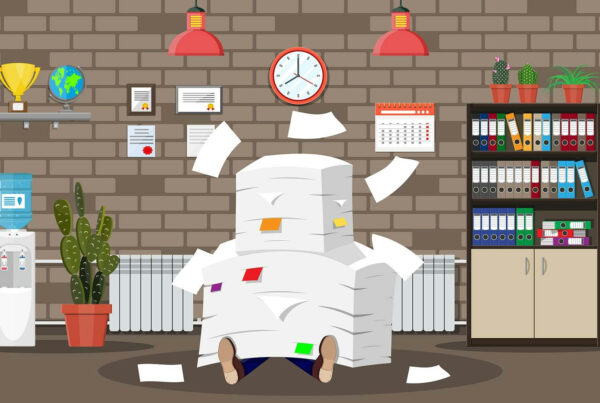You had a few meetings to scope the project with your new client. The meetings were productive. The client was excited. Everything seemed to be in order and you won the project.
Peeling Back the Onion of Creative Crap
Following another productive meeting with the client, this time to kickoff the project, you begin work. The client gives you access to all the “behind the scenes” stuff (style guides, photography, copy, website etc…whatever you need to get the job done).
As you begin to examine the assets they provide you, a cold sweat breaks out across your clammy forehead. Everything is a mess. From their logo files to their website backend, their creative and marketing materials are a disaster. (“And why the heck is the primary logo in CorelDRAW format?” you think, but don’t say.)

Some of these assets really need to be re-done, but you already have an approved scope and price. Do you tell the client their stuff needs to be re-done? Or maybe you should just suck it up and deal with the mess?
Your Role as a Creative Professional
After a few years operating as a “production monkey” for my clients, I started to realize that my role was much bigger than just cranking out the next project. I needed to take a more consultative approach to helping my client solve bigger problems in their business. As a result, the projects got bigger and bigger and my agency’s role with our clients became more and more entrenched.
This should be the approach that all creatives take with their clients: If you see room for improvement, you should take a consultative approach and tell the client. This is the key to unlocking deeper and more profitable engagements with your clients.
How to Tell Your Client They Need Help
How do you professionally and tactfully upsell your client into services that will help their business? Below you’ll find what I consider “the right approach” in a script you can use.
“I’m excited to get started on this project. Thank you for sending over the assets. I’ve reviewed them and have some recommendations. I know this isn’t part of the project we’ve scoped and priced already, but my goal is to provide you with the best solutions to generate the best results. I was looking at this __________ and these improvements will make a big difference.
Recommendation 1: ________________________
Recommendation 2: ________________________
Recommendation 3: ________________________
Like I said, they are just recommendations. I don’t want to disrupt anything in your business. But I feel a responsibility to all my clients to help generate the best results possible. If you’d like to consider any of those recommendations, I’d be happy to create a more formal proposal and price for you to consider. If not, we can continue working on our project under the current agreement.”
The Only Possible Client Responses
There are only a few possible outcomes to this approach (from reasonable minded clients…of course, the unreasonable clients should already have been vetted out and you shouldn’t be working with them).

First, your clients will begin to see you as a creative partner who is looking out for their best interests. The script talks about “producing the best results” a few times. And that goal will resonate with the client.
Some clients will just want you to proceed with the original scope. In this circumstance, you will have planted a seed for potential future work which can potentially increase your revenue in the future.
Other clients will want you to price the revised scope according to your recommendations. In this circumstance, you will increase your revenue immediately.
Regardless of what your client chooses to do, you will be able to hold your head high knowing that you are moving your business into a more consultative style and attempting to provide more value to your clients.
You told them that their stuff sucked and you offered to fix it. If they don’t act on it, at least you will have done your part.












